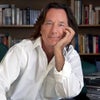The Secret Science of Novak Djokovic’s Training Pod
It's called the Cyclic Variations in Adaptive Conditioning machine, and it looks like a sci-fi egg from outer space. In theory it one-ups standard hypobaric chambers by giving users greater aerobic gains in a fraction of the time. Is CVAC crackpot pseudoscience? Or an important new discovery that could change the way you train?
New perk: Easily find new routes and hidden gems, upcoming running events, and more near you. Your weekly Local Running Newsletter has everything you need to lace up! .
Polly Crawford is in a happy snooze, utterly knocked out, her head lolling, her mouth an ambiguous smile, her chest rising and falling in slow rhythm as the industrial-noise whoosh and whir of a motor pumps air in and out of the enclosed pod she has crawled into—a ridiculous-looking contraption straight out of Woody Allen’s Sleeper.
Crawford, a petite, blond 44-year-old whose body is roped with the sinewy muscle of a triathlete, stepped off her bicycle 20 minutes ago after a long training ride. Now, as she tries to do at least two times a week, she has come to a Temecula, California, business park that serves as the headquarters for a tiny company called CVAC, an acronym for a fitness system called . For an hour she’ll sit inside this fiberglass egg, which is crammed into a back storage room and supervised by CVAC’s chief athletic officer, a former triathlete named Jim Chapman. Crawford has been doing this for the past 18 months, because she believes the pod, a super-rapid alternating-barometric-pressure chamber, improves her performance by giving her more endurance and shortening her recovery time. This makes her either deluded or canny.
Crawford swears by CVAC, but people swear by a lot of things. There’s always some new gizmo—offering electro-stimulation, whole-body vibration, infrasound, cryotherapy—that promises to ratchet us beyond our sad, quotidian limits. Often the companies selling these devices fail as time and trendiness pass and the machines are shown to provide only slight or nonexistent benefits. Sometimes promoters cynically tout miracles, knowing the devices are phony, and then, when the luster fades, they skip off with whatever profits they’ve made and start over again somewhere else.
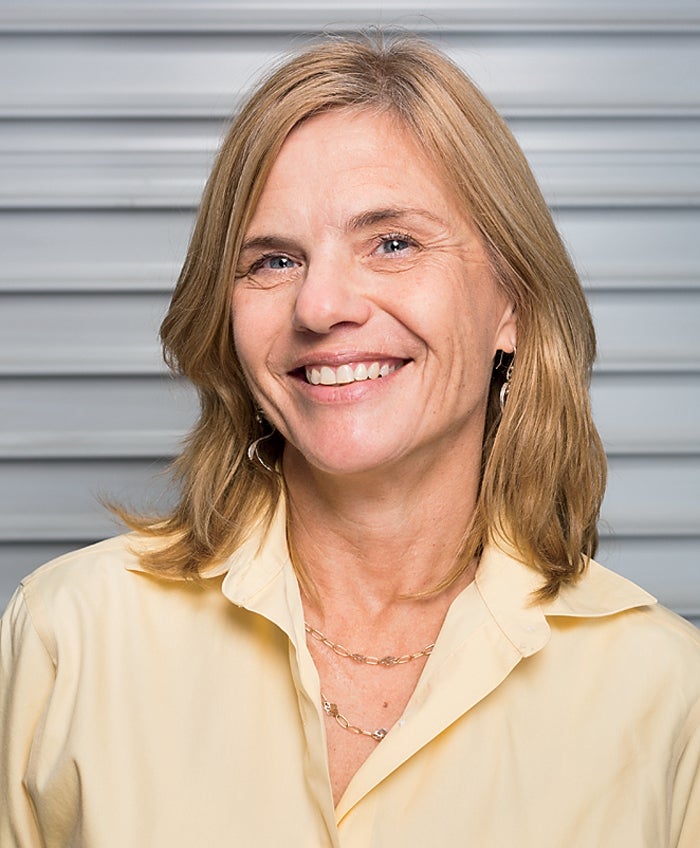
If that was CVAC’s plan, it has flunked the execution. Not only are CVAC’s founders and employees not getting rich, sometimes they’re not getting paid. Despite some big publicity several years back, and the sale or lease of about 30 CVAC units to businesses and rich, hopeful early adopters, the company has had trouble just keeping the lights on. When the CEO, Allen Ruszkowski, first started working at CVAC 11 years ago, he had more than $1 million squirreled away, after a career in the medical-device industry. His net worth now is negative $500,000. His house was foreclosed on and auctioned off in July of 2014, and he worries about getting evicted from the condo he’s been living in, because he can’t pay the mortgage or association fees. He and his romantic partner, Mary Steinman, CVAC’s director of marketing communications, dumpster-dive for recyclables to sell for cash.
Chapman lives in nearby Escondido, in an RV parked on a property belonging to Susan Cooper, a former national- and world-champion time-trial cyclist who works as CVAC’s product manager for training and education. Chapman lost his house after he put his last nickel into the company to keep it afloat.
But the pod people are tantalized by declarations like Crawford’s that CVAC really does improve performance, and by some still-sketchy science that says she just might be right. They’re so convinced that their device is a boon to the health and fitness of humankind that they’ve become like Victorian missionaries knocked low by malaria who keep on proselytizing anyway. In the face of disaster, they’ll tell anybody who listens that the machine’s benefits extend far beyond making Polly Crawford go faster on a bike. “It would be immoral to abandon this,” Ruszkowski says.
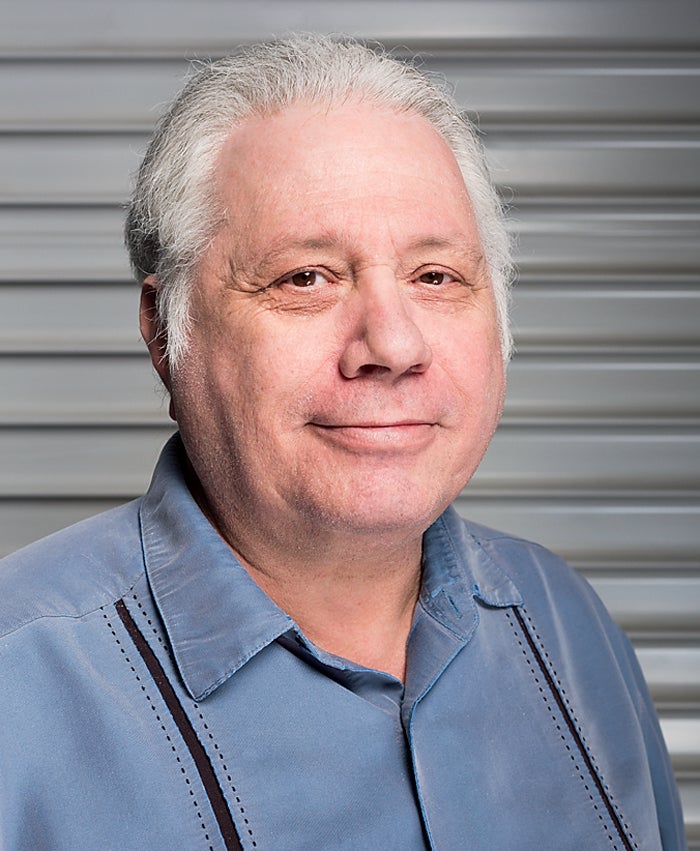
They believe they’re on a quest to fulfill the life’s work of the pod’s inventor, Carl Linton. A friendly 65-year-old with gray, thinning hair, a paunch, and a limping gait, Linton is a largely self-educated philosopher-tinkerer given to expounding “Carl-isms”—nuggets encapsulating his esoteric worldview, a head-spinning mélange of the American Patriot movement, Hindu Vedas, Hermeticism, quantum physics, and music theory.
The pod is the essence of Carl-ism. Sounding like a parody of a California human-potential guru circa 1975, Linton claims that the pod is a harmonic tuner that aligns our bodies and minds to the pulse of the universe. “CVAC has to do with the way any living system expresses itself in the world,” he told me, “and that includes how it expresses itself in creation and creation expresses itself in the body.”
“As above, so below,” Linton likes to say, quoting a Hermetic slogan. “The small is the large, the large is the small. It’s a holographic universe. You can see everything at once. It is also possible to be everywhere at once. Your body is holographic. It’s quantum.”
Linton used to be an active part of the Patriot movement, but he left that behind years ago and moved forward with a few of the associated ideas—for example, he believes the United States is secretly governed under what he calls “martial-law rule.” Even with our broken system, he says, the pod can help. Not only will it give us health, but it will make us sane, so that we can “start thinking clearly and start solving problems, and what happens to the government then? It becomes a different world.”
Fine, shake your head and laugh. But leave room for the possibility that there’s more than Carl-speak happening inside the pod. That maybe, without fully understanding how, the true believers of CVAC have stumbled onto something real.
As Crawford naps in the pod, an external pump adjusts the barometric pressure inside, simulating increases and decreases in altitude. As the pressure goes down, the amount of breathable air available to her decreases, too. In this controlled environment, she’s taken through a range of altitudes, from sea level to 22,500 feet, with intermediate heights along the way. Then she’s taken down again, and back up, as a computer screen outside the pod charts peaks, plateaus, valleys, and sudden drops. The standard pod session last 20 minutes, but Crawford stays inside for an hour. The kinds of maladies that can afflict ascending and descending climbers aren’t in play, because the amount of time spent at each altitude is short.
Athletes have long used hypobaric chambers; as far back as 1922, British climbers tested themselves in an Oxford University pressure chamber while preparing for an Everest expedition. In 1966, Roger Bannister predicted in a New York Times essay that “more ruthless coaches may well attempt to use low-pressure chambers in order to acclimate or ‘train’ athletes artificially.”
[quote]In the summer of 2011, The Wall Street Journal reported that tennis star Novak Djokovic had been “using something truly weird: the CVAC pod.”[/quote]
Hypobaric chambers work by forcing beneficial adaptations. The reduced oxygen at higher altitudes—real or simulated—creates a state in humans called hypoxia, an oxygen debt. The body compensates by producing more erythropoietin (EPO), the hormone that stimulates production of red blood cells, releasing a hypoxia-inducible factor (HIF-1, which sparks vascularization) and causing other changes in the body that scientists are still trying to figure out.
The pod differs from a standard hypobaric chamber in its design and mode of operation. The typical stay inside a chamber lasts much longer, often an entire day, and usually the pressure doesn’t change while you’re in there. (Most athletes use chambers that are set to simulate conditions between 8,000 and 10,000 feet.) CVAC’s backers argue that it’s the constant and rapid pressure changes that account for the pod’s benefits.
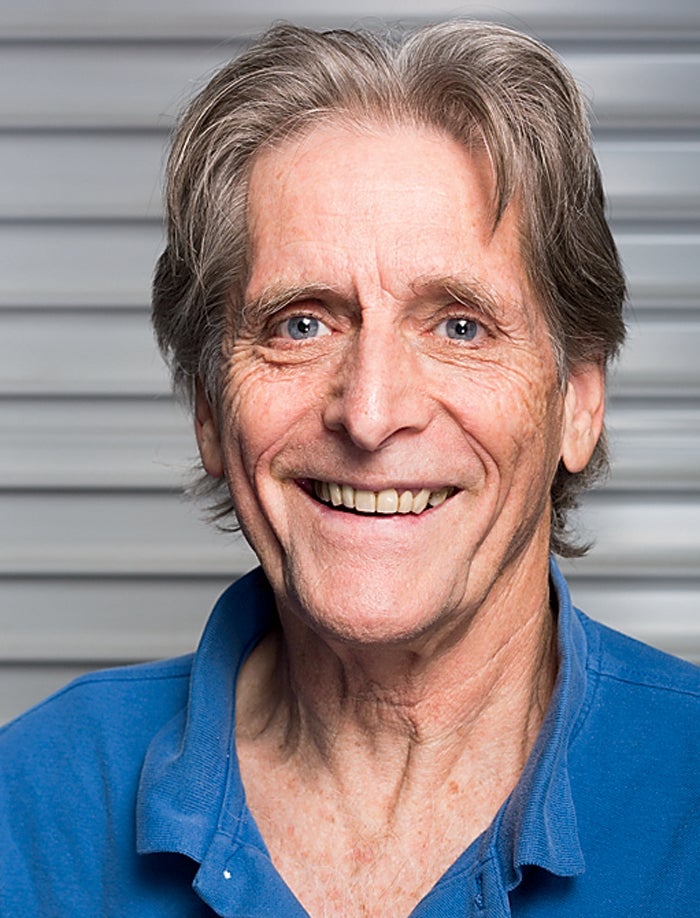
As I watch Crawford sleep, Chapman is standing beside me, and I mention Novak Djokovic to him. Before I can complete my thought, Chapman quick-draws his smartphone and starts swiping across the screen to show me pictures of the Serbian tennis great sitting in the pod. Then he shows me the terrific seats Djokovic arranged for Chapman at the 2011 U.S. Open.
All this is tied in with a brief period of past glory: when Djokovic was publicly endorsing Carl Linton’s creation. Back in the summer of 2011, that Djokovic had been using “something truly weird: the CVAC pod.”
“I think it really helps—not with muscle but more with recovery after an exhausting set,” Djokovic told the newspaper. “It’s like a spaceship. It’s very interesting technology.”
The tale of Djokovic’s pod immersion spread quickly, and after years of frustration, CVAC readied itself for the limelight. Then Djokovic, sounding spooked, backtracked. He said he’d only used the pod a couple of times. Soon after the 2011 U.S. Open, , “I’m going to repeat it for the last time: It doesn’t have any influence on my success.” Reporters started debunking the pod—which you can lease for $150,000 over five years or buy outright for $129,000—as an expensive gimmick.
“Everyone is looking for Djokovic’s secret,” Benjamin Levine, a professor of medicine at University of Texas Southwestern Medical Center, at the time. “I think every athlete is looking for an edge, but I don’t think you’ll find it with CVAC.”
CVAC’s critics, then and now, insist that the constant cycling between pressures, and the short duration inside the chamber, will not trigger the adaptations athletes are looking for. What’s more, the short-term hypoxia mimics sleep apnea, which can lead to cardiovascular disease and other problems.
When I tried my own session in a pod—one that sits in CVAC’s small reception area—I was mainly worried about throwing up. Years ago I was brought to my knees by altitude sickness in Peru, and even before Steinman closed the hatch I remembered the feeling and clenched the walkie-talkie that she’d handed me so we could communicate. She started me out with the tenderfoot package, used to test whether somebody can handle more advanced CVAC training. Aside from some agitated jaw wriggling and nostril holding to equalize the pressure in my ears, I didn’t feel too bad. It was like taking off—over and over again—in a passenger jet.
Ruszkowski is a handsome fellow of 60, silver haired, blue eyed, smooth skinned, looking every bit the successful businessman, so long as you don’t stare too closely at his worn shoes and ragged trouser cuffs. Right now he’s standing in the conference room of a San Diego Hyatt, getting ready to PowerPoint his way into the hearts of would-be investors. But the start time has come and gone, and it doesn’t look like many, or any, moneybags are among the dozen people seated around the long table. Most of them are muscled trainers and managers from the Sporting Club, a fancy gym adjacent to the hotel where CVAC has set up a pod for a trial run ($40 for a 20-minute session).
If Ruszkowski is fazed by the weak turnout, he hides it well. “We think CVAC is a super form of exercise,” he says enthusiastically. “Just look at what we did with Novak Djokovic!” Djokovic may have jilted the pod, but CVAC never misses an opportunity to claim credit for helping make him a star.
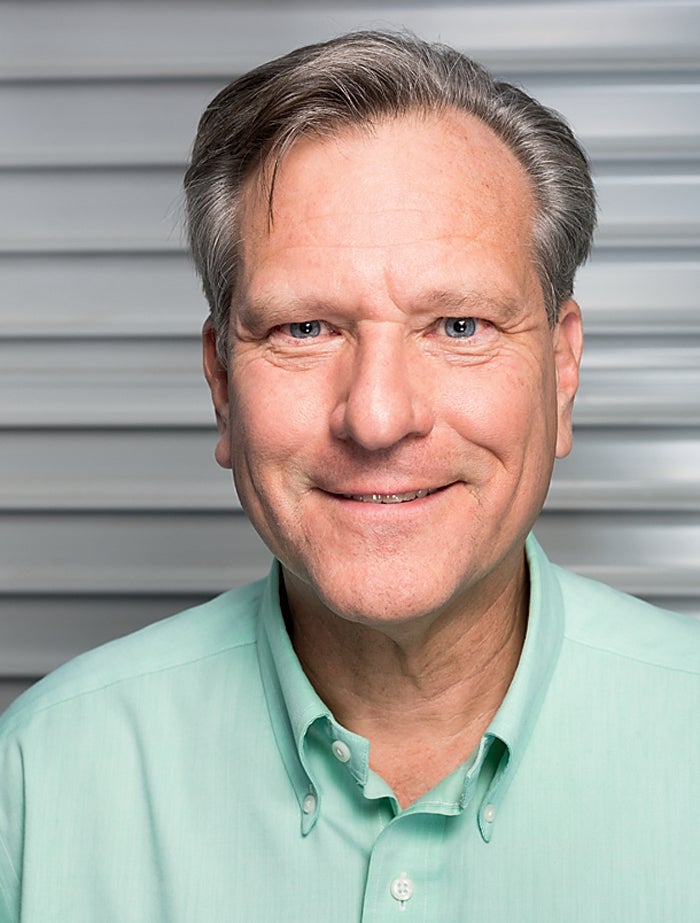
The man saying this is the same man who, when he first heard about the pod in 2003, thought it sounded like a scam. But, as a favor to a friend of the then CEO, a biotech entrepreneur named Helmut Loch, Ruszkowski visited a pod location and listened to all kinds of amazing statements about what it could do. There was no supporting data, so he shared some free marketing advice and went on his way. CVAC contacted him again and again, though, until he finally met with Linton personally and did a pod session.
The next day, he says, “it was like somebody had cleaned the windshield on my brain.” He went to the gym. The weight machines seemed easier. Ruszkowski’s partner, Steinman, was suffering from Sjögren’s syndrome, which can lead to painfully dry eyes. Linton put her in the pod, and according to both Steinman and Ruszkowski, her eyes began to irrigate again. They considered the possibility of a placebo effect but kept coming back for more sessions, until Ruszkowski finally bought into the company. CVAC, he told me, “ceased to be a business and turned into a mission.”
As Ruszkowski moves through his presentation, he tells us that the pod can clean out the lymph system, the body’s garbage dump, thanks to the repeated squeeze-and-release effect of changing air pressures. He attributes his baby-bottom complexion to CVAC. He talks about the piezoelectric effect and cell membranes.
When Carl Linton explains the pod to people, he prefers to play the role of swami, not salesman. We met one day in the office he calls his lab, across the freeway from CVAC headquarters. He told me how he created the pod’s pressure variations—there are more than a hundred—to work like musical scores.
“All creation has to do with the nature of music, of sound, and it’s a dance, because you are moving vibrations, pressure waves, all over the place,” he said. “These constantly changing waves are sensed through every pressure sensor in your body.”
Then he stared into my eyes and said: “Your face denotes that you understand a lot of Eastern philosophy.”
The only Eastern philosophy I know comes from a college professor’s forced march through the Upanishads, but Linton is well steeped in it. He’s spent decades doing “work” on himself—rebirthing, Vedic studies, spiritual questing, and constant perusal of science and technical magazines—and he has all the confidence of the autodidact.
The pod concept grew out of a more practical experience Linton had. He had trained as a respiratory therapist at a Virginia community college, and then, starting in 1984, he helped conduct a Georgetown University research project that tested whether exposing people to brief periods in a hypobaric chamber could help treat asthmatic patients. The technique didn’t appear to do much for their breathing, but participants generally said they felt better. Linton sensed that the treatments affected every system in the body, making it “more viable all the way around.”
Convinced that he’d made an important discovery, Linton launched what became CVAC, using $100,000 collected from various backers. He moved to San Jacinto, California, and, in an effort to gin up publicity, crossed the border to Tijuana, where he tried to turn nag racehorses into track champions inside a steel shipping container that he’d converted into a huge hypobaric chamber.
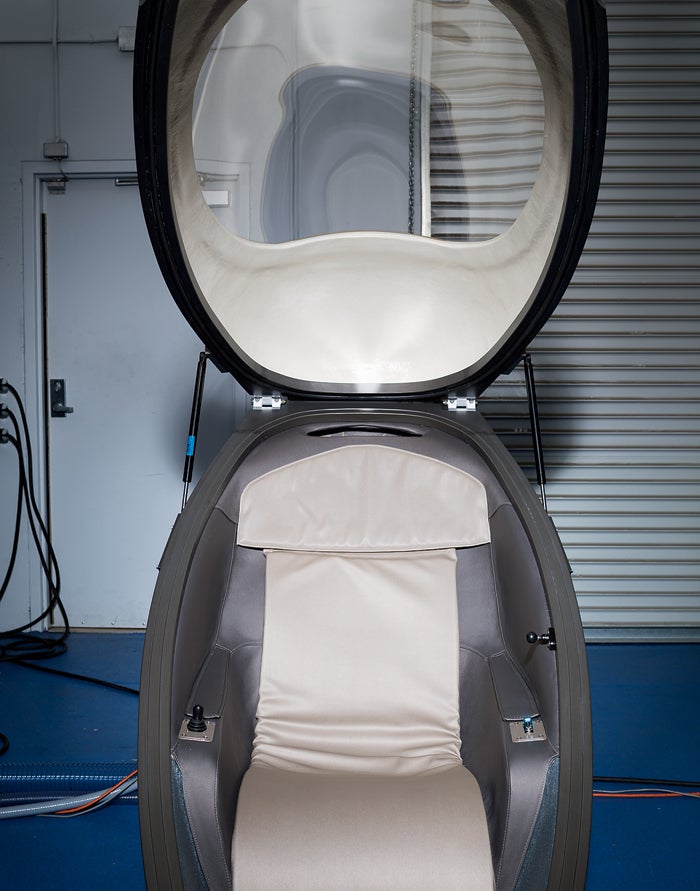
“They gave me the horses that were really bad, bleeders usually,” he recalled. “But the bleeders stopped bleeding. They got more wind. The ones that were really nervous and flighty got stronger and more focused.”
Having proven his theories to himself, Linton hired a fabricator to construct a crude, coffin-like fiberglass pod and set it up in his garage. He cruised gyms and cycling centers looking for human guinea pigs. Susan Cooper, the time-trial champ, was one of his first. She drove over to Linton’s house in 1996 and stepped into his machine.
“He had a pad from a patio chair to sit on, and you held an altimeter,” Cooper says. While you were inside, Linton sat outside, adjusting the air pressure with a hand valve. Cooper became a believer and feels certain that time in the pod was critical to her success on the bike. “I was on good nutrition and CVAC,” she says.
I’ve heard a lot of stories like Cooper’s. Crawford told me that, before CVAC, she “could climb with the guys and stay with them” but would eventually fall back near the top of hills. After CVAC, she said, “right out of the gate, within a few weeks, I was able to go the same speed and not get dropped and sometimes even pass people.”
Cyclists, endurance racers, wrestlers, and weight lifters have all told similar tales. But athlete testimonials are the wooden nickels of scientific evidence. Study after study, using everything from corn starch to sodium bicarbonate, has proven that if you tell a jock that something will make him stronger or faster or tougher, he’ll believe you and actually perform better.
Ruszkowski understands this, and to his credit, he admits that the company has very little data to support its claims. “We do have a number of theories,” he tells the members of his Hyatt audience.
He navigates to images of three academic papers from research groups that have tested the pod. A University of Hawaii experiment in test subjects, signifying acclimatization to altitude. A study at the University of California at San Diego in people suffering from a rare body-fat disorder called Decrum’s disease. A Stanford University study in middle-aged men at risk for metabolic disorder. These studies were very limited, with small numbers of people, and they say nothing about juicing up an athlete. But they do show that the pod does… well, something.
That’s the thing about the pod. Something does indeed seem to happen when people use it, but despite Linton’s hand waving, nobody, including CVAC, knows exactly what. There are, however, hints from ongoing research into the effects of hypobaric hypoxia.
Hypoxia by itself isn’t really mysterious. Runners and cyclists sleep in tents that mimic the low oxygen levels of high altitude, or use masks to deliver hypoxia-inducing air mixes, and they produce more EPO as a result. All these devices ignore the role of pressure, and when scientists talk about what that role might be, they can start sounding a little like Linton.
“Hypobaric is different from the reduced-breathing devices and gas mixtures,” says lieutenant colonel Ted Meeuwsen, a researcher with the Dutch air force and one of the world’s leading experts on the physiological effects of high altitude. “We think, my scientific colleagues all over the world, that atmospheric pressure does a lot in the body.”
[quote]Something does indeed seem to happen when people use the pod, but despite Carl Linton's hand waving, nobody, including CVAC, knows exactly what.[/quote]
Frank Powell, a professor at the UC San Diego Department of Medicine, who studies hypoxia’s effects, says that exposure leads to “a whole range of responses, from the whole body, reflexes down to the cellular level, and changes in gene expression.”
Experiments in Spain done by professor Gines Viscor of the University of Barcelona have shown that four hours of daily hypobaric hypoxia , and that passive, intermittent hypobaric hypoxia has a protective cardio effect.
Meeuwsen and colleagues put Dutch endurance athletes into a hypobaric chamber for short periods each day for a year, then observed the effects. “What we saw in our European runners,” he says, “is that having them do consecutive days inside the chamber led to improvements that were ridiculous.”
So hypobaric hypoxia does appear to improve athletic performance, just as CVAC says, but none of this research involved the pod, and the experts, especially Viscor, are skeptical of CVAC’s theories. They all acknowledge, however, that science is just beginning to understand how intermittent hypobaric hypoxia works.
For example, while the post-Djokovic critics worried that the pod might mimic sleep apnea, new research has shown that the same kind of short-term, cycling hypoxia can improve walking endurance and speed in people who have suffered spinal-cord injuries. “Intermittent [hypobaric hypoxia] is at a crossroads in our research,” UC San Diego’s Powell says. “Now we’re saying, ‘Well, there may be some good.’ ”
“I can imagine [CVAC] activating signaling pathways, turning off and on different genes. That is scientifically believable to me,” Powell adds. “I cannot tell you how it happens, but we do have clues enough to make it believable.”
Wrapping up his hotel presentation, Ruszkowski almost pleads with his audience. “We don’t have enough units to do research,” he says. CVAC is stuck in a frustrating situation. It needs to finance real studies to attract investors, but it can’t do those studies until it attracts investors.
So he asks his listeners to take the same leap of faith he took. Concussions! Everybody’s been reading about football concussions. Well, there was a study by a guy, and he found that high schoolers playing at higher elevations had fewer concussions. “So you might be seeing CVAC pods on the sidelines of NFL games!”
CVAC is, he promises, “a multi-billion-dollar opportunity.” The personal trainers nod their heads. They, at least, seem convinced.
One day, as I sit at a small, crowded table in a cubby of an office with Linton, his wife, Jean, and daughter, Stacy (who both work for CVAC, also often without pay), Steinman, Chapman, and Ruszkowski, I can’t help rooting for them all. There’s no Plan B: either the pod succeeds, or they all start diving into dumpsters. As disembodied voices of other CVAC team members echo over the speakerphone during the weekly conference call, it’s clear that they’ve learned to live on Ruszkowski’s boundless optimism.
The Seattle Mariners might be interested in looking at a pod. A doctor might try to place a pod in a diabetes treatment center. A retired MMA fighter named Jim Savage might buy one.
In their times of need, CVAC employees sometimes find themselves dealing with dicey operators. When Linton and I climbed into a company pickup for the short drive to CVAC’s offices from his lab, I mentioned a Chicago-area chain of weight-loss centers that promote the pod as a slimming device.
“Oh geez, I know,” he said, clucking his tongue with disapproval.
I mentioned the Beverly Hills Rejuvenation Center, an anti-aging hormone mill where Mel Gibson supposedly uses a pod. The center says the pod creates “changes that one could experience through weeks of conditioning through strategically planned runs or other types of workouts, but the CVAC allows for this conditioning to take place with no exertion necessary.” CVAC specifically says the pod will not replace exercise.
Linton looked at me a little sheepishly, as if to ask what I expected CVAC to do when paying customers show up with money to lease a unit. “Sometimes we get desperate,” he said.
That worries Karen Herbst, a University of Arizona endocrinologist who conducted the Decrum’s pain study and who now serves on CVAC’s scientific advisory board. She’s convinced the pod works, but she told me: “This is such a novel technology that you’ve got a high risk for fitting in with voodoo and having people think we’re all crackpots.”
CVAC faithful deeply believe they have seen results, but until somebody performs experiments, they’ll have to rely on Ruszkowski’s cheerleading. In the conference call, he tells the troops about a guy who knows a guy who’s an angel investor in New York.
Also, he says, he attended a big biotech convention in San Diego recently and engaged with some promising prospects. When he mentioned that the pod might affect an enzyme called nNOS, a hot topic of recent research, French scientists seemed very interested. He met a pharmaceutical-industry consultant at a cocktail party. When Ruszkowski said that the pod might increase the production of mitochondria in cells, the man’s “body language changed completely.”
About a month after the conference call, Ruszkowski will send an e-mail to me. “Our investor prospects continue to be promising,” he’ll write. “But no money yet. Reportedly, at least one is waiting to see if the NFL funds research regarding the CVAC process.”
You never know.
After the meeting, as I’m leaving CVAC, I try to find Ruszkowski to say goodbye. He’s in the pod in the reception area. He’ll go dumpster-diving for cans and bottles later, but as I wave at him through the pod window he’s smiling, and his skin is perfect.
Brian Alexander () writes frequently for ���ϳԹ��� about the science of human performance.


